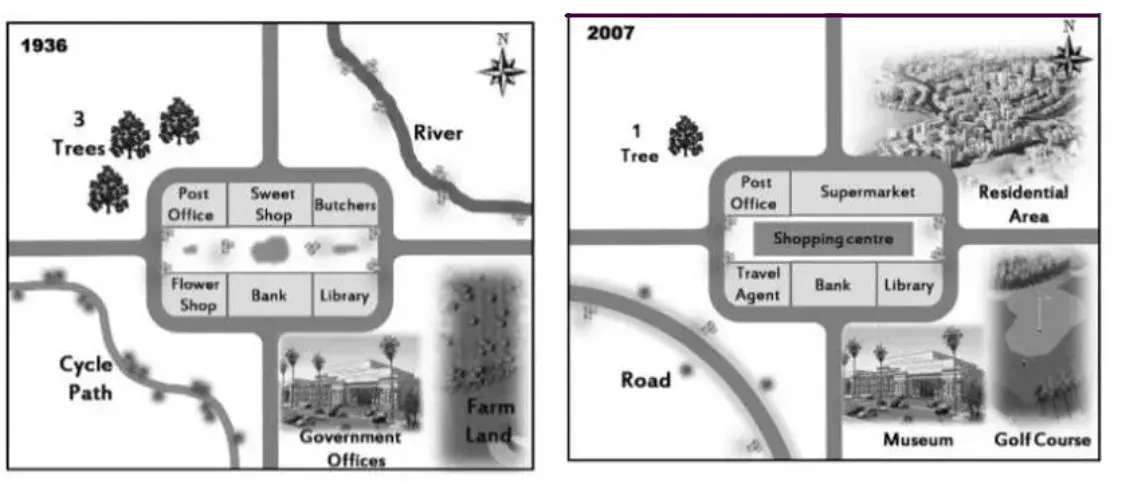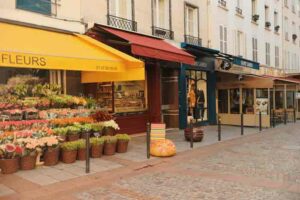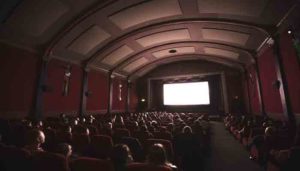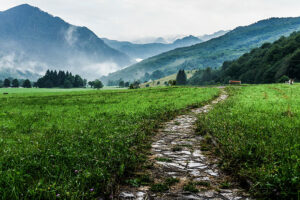IELTS Academic Writing Task 1
The maps below shows the town of Lynnfield in 1936 and then later in 2007
Summarise the information by selecting and reporting the main features and make comparisons where relevant.
Things you should know about Academic Writing Task 1:
- You are asked to describe information presented in graph/ table/ chart/ diagram.
- You have 20 minutes to finish the task and you have to write at least 150 words.
- If you are asked to use the information presented in the graph you must be careful not to copy it.
In Academic Writing task 1, candidates are assessed on their ability to:
- Organise, present and possibly compare data.
- Describe the stages of a process or procedure.
- Describe an object or event or sequence of events.
- Explain how something works.
Model Answer
The maps illustrate the main changes in Lynnfield between 1936 and 2007.
overall, it is apparent that the town became more residential, commercial, and accessible(can be travelled to easily) at the expense of natural land, agriculture and smaller shops.
The most notable changes in 1936 were rivers northeast of the post office, surrounded by trees, and pristine land. By 2007, the number of trees had declined and the land around the river was becoming a residential area. To the southwest of the city, bicycle lanes have been converted into motorways, and on the other side of the city’s south-eastern map, government agencies and farmlands were once converted into museums, each with a golf course.
Further more, in the centre of town, there was a line of post offices, confectionery stores, butcher shops, and an alley that separated these stores from florists, banks, and libraries. In 2007, only banks (slightly expanded), libraries and post offices remained untouched. The flower shop was converted into a travel agency that was once the centre of the downhill square and replaced by a large shopping mall.
Read More :
- The chart shows the proportion of people in a UK survey carried out in three different years
- The diagram details the process of making leather products
- The chart below shows how much money is spent in the budget on different sectors by the UAE
- The diagram details the process of making clothes from plastic bottles
- The chart below shows the average daily minimum and maximum level of two air pollutants
The maps below shows the town of Lynnfield in 1936 and then later in 2007
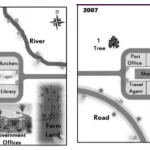
The maps illustrate the main changes in Lynnfield between 1936 and 2007.
overall, it is apparent that the town became more residential, commercial, and accessible(can be travelled to easily) at the expense of natural land, agriculture and smaller shops.
The most notable changes in 1936 were rivers northeast of the post office, surrounded by trees, and pristine land. By 2007, the number of trees had declined and the land around the river was becoming a residential area. To the southwest of the city, bicycle lanes have been converted into motorways, and on the other side of the city’s south-eastern map, government agencies and farmlands were once converted into museums, each with a golf course.
Further more, in the centre of town, there was a line of post offices, confectionery stores, butcher shops, and an alley that separated these stores from florists, banks, and libraries. In 2007, only banks (slightly expanded), libraries and post offices remained untouched. The flower shop was converted into a travel agency that was once the centre of the downhill square and replaced by a large shopping mall.
